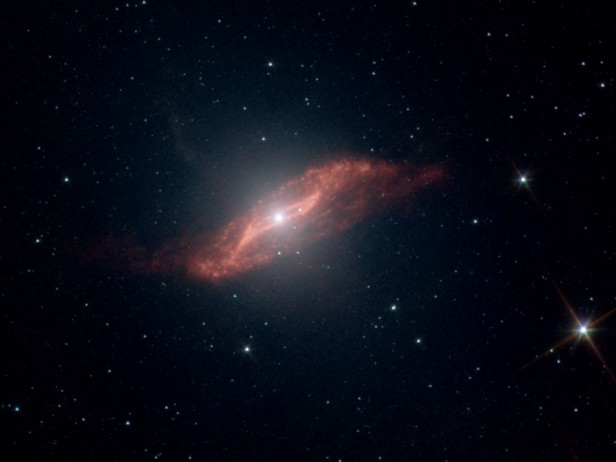The Galaxy Within Centaurus A

Explanation:
Peering
deep inside Centaurus A, the closest
active galaxy
to Earth, the Spitzer Space Telescope's
penetrating infrared
cameras recorded
this startling vista.
About 1,000 light-years across, the twisted cosmic dust cloud
apparently shaped like a
parallelogram is likely the result
of a smaller spiral galaxy falling into the giant
Centaurus A.
The parallelogram lies along the active galaxy's central band
of dust and stars visible in more
familiar optical images.
Astronomers believe that the striking geometric shape
represents an approximately edge-on view of the infalling
spiral galaxy's disk in the process of being
twisted and warped
by the interaction.
Ultimately, debris from the ill-fated spiral galaxy should
provide fuel for the supermassive
black hole lurking
at the center of
Centaurus A.
Announcement:
The APOD main server will be unavailable this weekend due to
maintenance.
Scheduled downtime is June 25 (6:00pm ET)
through June 28 (6:00am ET).
Authors & editors:
Robert Nemiroff
(MTU) &
Jerry Bonnell
(USRA)
NASA Web Site Statements, Warnings,
and Disclaimers
NASA Official: Jay Norris.
Specific
rights apply.
A service of:
LHEA at
NASA /
GSFC
& Michigan Tech. U.

